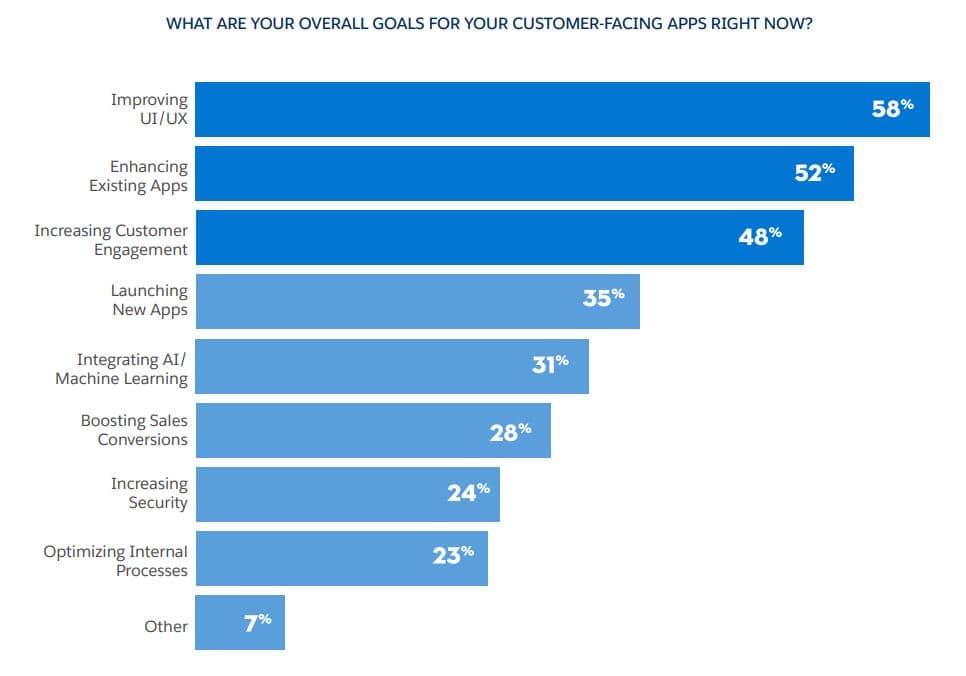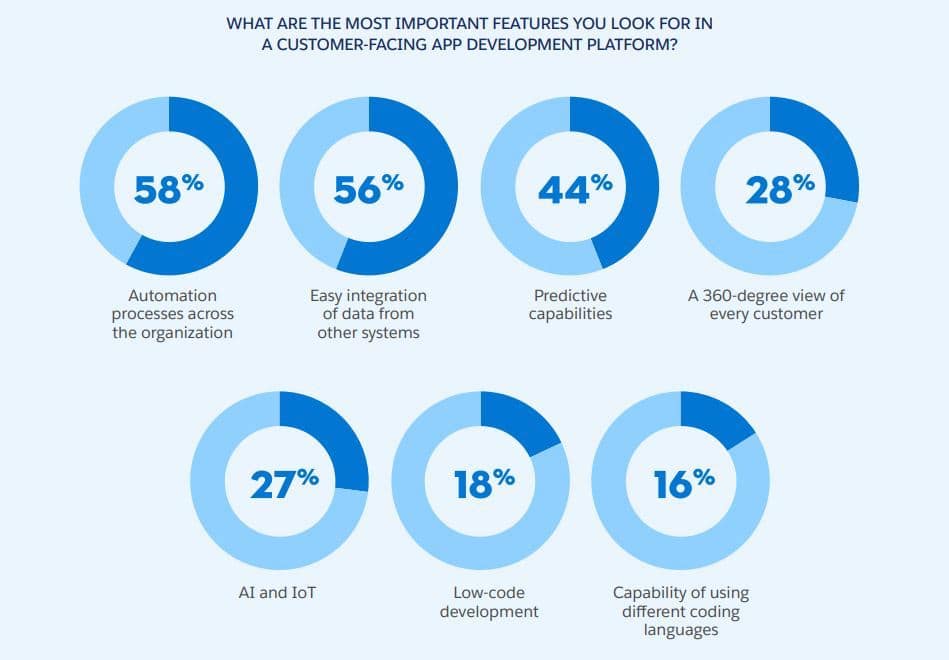Top App Development Trends for 2021

2020 was a year for the history books. If there was ever a time to go all-in on digital, regardless of industry, this was the year. As many companies could no longer interact face-to-face with customers, digital engagement was vital to maintaining connections and driving business. In many ways, businesses couldn’t remain effective without being digital-first.
Stuck mostly at home, consumers explored new digital habits, ranging from telemedicine to online shopping. According to a McKinsey survey, 76% of consumers experimented with new shopping behaviors, which most intend to continue using after the pandemic. For many brands, this turned “we’ll go fully digital someday” into “we need to be 100% digital tomorrow.”
App development was one of the key digital opportunity areas to meet customer needs Thanks in part to low-code tools, we saw companies thrive by diving headfirst into adopting and updating apps. Financial technology companies like MX built apps in a single weekend to help banks process billions of dollars in much-needed small business loans, and help keep people employed. Gyms like FITNESS SF went all-digital, amplifying app features so members could replicate the gym experience to stay fit at home. And healthcare organizations like UCSF built secure patient referral apps that decreased wait times by an average of 50%. From spinning up new apps from scratch to amping up features in existing apps, moving to an all-digital world was essential to business success this year.
In partnership with Pulse Q&A, a research and insights community and platform, we surveyed tech executives across the globe to uncover the most prominent trends in app development in 2020. Here are some key themes:
App development was a major focus and a team effort
Sixty-one percent of tech leaders said customer-facing app development was a high or very high priority for their organization. This was true across industries, as biotech, construction, software, finance, and insurance leaders consistently rated customer app development as a high priority. Notably, 75% of executives in the healthcare industry said they were focused on launching new apps in 2020. This is not surprising given the urgent need to shift to online medical appointments and manage patient care during the pandemic.
And it’s not just one department that’s responsible for conceiving and bringing an app to life. Multiple lines of business are involved, with IT, engineering, and product development leading the way. But marketing, security, and sales also play a role. In fact, 42% of respondents said marketing was involved in customer-facing app development, and 25% indicated a level of sales involvement. This suggests that successful creation and adoption of customer apps is a full team effort, with nontechnical departments weighing in on helpful features and design.
Improving the user experience and user interface were the top app dev goals
People are not likely to use an app if it’s clunky and hard to navigate. That’s likely why the research showed the majority of tech executives (58%) were focused on improving the user interface and user experience (UI/UX) of their customer-facing apps. This is followed closely by personalization (47%) and engagement (45%), which are both crucial for appealing to customers relying on digital channels as a lifeline during the work-from-home era.

However, making things simple to use is often very difficult. Many tech leaders said implementation testing and deployment was the biggest challenge for their team. Over half of the respondents in the survey cited “improving app building and implementation” as their top app development priority.
Tech leaders need automation to get to market faster
Despite the urgency in shifting to an all-digital business, tech leaders consistently cite budget and staffing constraints as top challenges to building apps faster. With limited resources, testing, building, governance, and planning often fall lower on the priority list.
Engineering resources [prevent us from building apps faster]. We are challenged with hiring talented developers with the specialized skills needed for our SaaS product.
AN IT DIRECTOR IN THE NORTH AMERICAN SOFTWARE INDUSTRY
To get to market faster, at a lower cost, and at scale, tech leaders looked for app development platforms that support automation, simple data integrations, and predictive capabilities.

Even with the existing challenges IT leaders faced, many were able to deliver on and exceed customer expectations. With IT as the MVP of 2020, CEOs would do well to lean into that momentum with increased resourcing in 2021 and beyond.
What 2020 means for the future of app development
The term “app economy” was coined more than a decade ago to describe a world in which there was a mobile app for everything. We could not have imagined then how much we would rely on apps for the convenient delivery of products and services during this crucial year–from food delivery during shelter-in-place to COVID-19 contact tracing.
Many IT leaders made enormous strides in accelerating app development by supporting customers and employees in response to COVID-19. While many of us would like to put 2020 in the rear-view mirror, the advances made this year will carry us well into the future to unleash incredible customer experiences.
